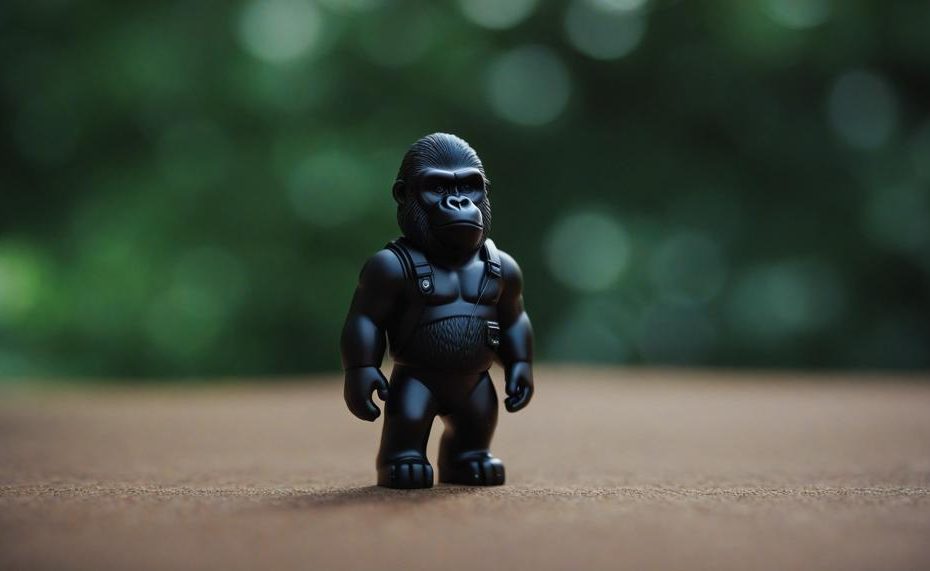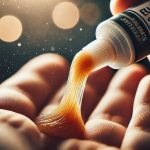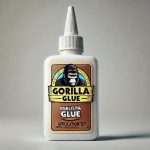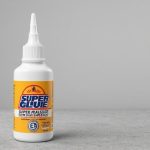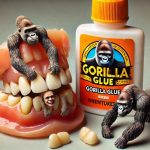Getting Gorilla Glue on your wall can seem like a disaster, but don’t worry—it’s definitely manageable. Here’s a step-by-step guide to help you remove Gorilla Glue from your wall without too much hassle:
- Gear Up: Before you start, make sure to wear gloves and protective eyewear to avoid any contact with the glue or cleaning agents.
- Scrape Away: Use a putty knife or scraper to gently score the glue. Be patient and work in small sections to avoid damaging the wall.
- Apply Mineral Spirits: Dampen a cloth with mineral spirits and rub it over the glue residue. Remember, these chemicals are flammable, so handle with care.
- Dry Overnight: Allow the wall to dry completely before proceeding with any painting or wallpapering.
- Tackle Stubborn Spots: For tougher spots, use a razor blade carefully. Alternatively, Goo Gone Ultra can be effective, but avoid it on painted surfaces.
Key Takeaways:
- Safety First: Gloves and eyewear are a must.
- Patience Pays: Work slowly to avoid wall damage.
- Proper Cleaning Agents: Mineral spirits for residue, but handle them with care.
- Drying Time: Always let the wall dry overnight.
- Stubborn Spots: Use a razor or Goo Gone Ultra, but cautiously.
By following these steps, you’ll have your wall glue-free in no time.
Table of Contents
What is Gorilla Glue?
Gorilla Glue is a polyurethane adhesive renowned for its strength, versatility, and durability. It’s a top choice for bonding diverse materials like wood, metal, stone, ceramics, and more.
Gorilla Glue forms a robust, permanent bond that expands to fill gaps, ensuring a tight fit.
This expansion property not only enhances the bond’s strength but also helps fill voids and irregularities in the materials being joined.
Key Features:
| Feature | Description | Benefits |
| Water Resistance | Highly resistant to water and moisture | Ideal for outdoor applications |
| Quick Drying | Begins to set in 10-15 minutes | Reduces waiting time for projects |
| Strong Bond | Expands to form a tight bond | Ensures durability and longevity |
| Versatility | Can bond multiple types of materials | Useful for a wide range of projects |
How to Remove Gorilla Glue from Wall
When dealing with the stubbornness of Gorilla Glue on a wall, it’s crucial to approach the removal process with care and precision. Here’s a detailed guide for effectively removing Gorilla Glue without causing damage:
- Assess the Situation: Before beginning the removal process, carefully evaluate the extent of the Gorilla Glue on the wall. This assessment will help determine the best approach for removal.
- Prepare a Gentle Cleaning Solution: Create a mild cleaning solution by mixing warm water with a small amount of dish soap. This solution will help soften the adhesive and facilitate its removal.
- Scrape Off the Glue: Use a plastic scraper or putty knife to gently scrape off the Gorilla Glue from the wall. It’s essential to be patient and persistent, working in small sections to avoid causing damage to the wall.
- Rinse and Repeat: After scraping off as much glue as possible, rinse the area with clean water and assess if further removal is needed. Repeat the process if necessary until the majority of the glue is removed.
- Use Mineral Spirits: If there are remnants of Gorilla Glue remaining on the wall, apply mineral spirits using a clean cloth to dissolve and remove any stubborn residue. However, exercise caution as mineral spirits are flammable.
- Dry and Prepare for Restoration: Allow the wall to dry thoroughly before considering any restoration or repainting. It’s essential to ensure that no moisture or adhesive residue remains before proceeding with any further treatments.
It’s important to note that Gorilla Glue removal may require professional assistance if DIY attempts prove unsuccessful or if there are concerns about potential damage to the wall.
Heat Method
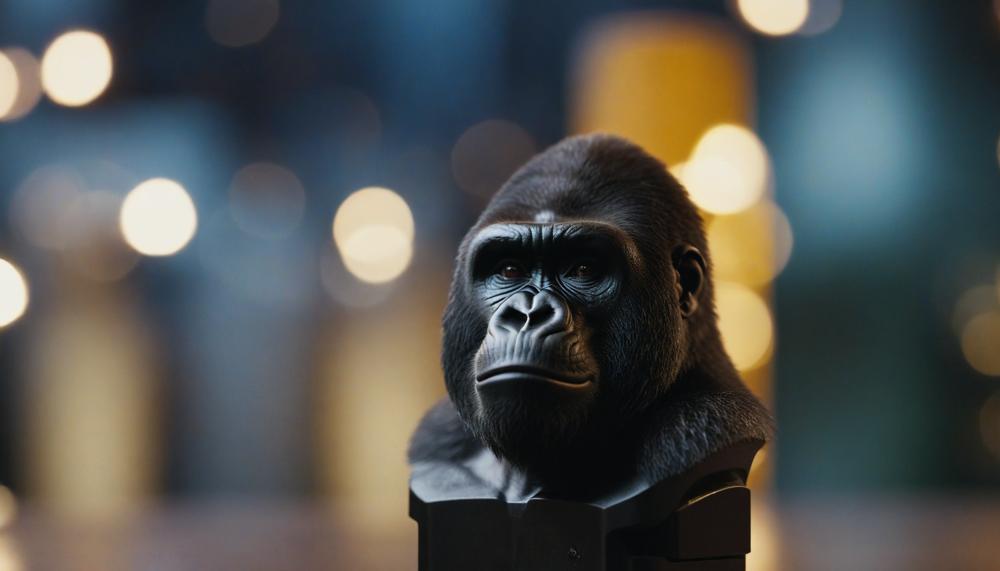
To effectively remove Gorilla Glue from a wall using the heat method, follow these steps:
- Prepare the Area: Ensure the surrounding area is protected with drop cloths to catch any falling glue. Open windows for ventilation.
- Apply Heat: Use a hairdryer or heat gun on a low setting to gently warm the glued area. Keep the heat source moving to avoid scorching or damaging the wall. The goal is to soften the adhesive, making it easier to remove.
- Scrape the Glue: Once the glue is warmed and softened, use a plastic putty knife or your fingers to gently scrape off the adhesive. Avoid using metal tools as they can damage the wall surface.
- Clean the Residue: If any glue residue remains, clean it with a mild soap solution or mineral spirits applied with a soft cloth. Be cautious with the solvent to avoid further damage to the wall.
- Inspect and Repair: After removing the glue, inspect the wall for any damage. If needed, repair and repaint the affected area to restore its original appearance.
Acetone Method
Acetone is a powerful solvent known for its effectiveness in breaking down adhesives. It works by dissolving the bond between the glue and the wall surface, making it easier to remove without causing damage. Below is a more detailed explanation of the steps involved in the acetone method:
| Step | Description | Additional Tips |
| Apply Acetone | Use a cotton ball or cloth soaked in acetone to apply directly to the Gorilla Glue. | Ensure good ventilation as acetone fumes can be strong. |
| Let it Sit | Allow the acetone to sit on the glue for a few minutes to soften it. | Check periodically to ensure the glue is softening but not damaging the wall paint. |
| Scrape Away | Gently scrape the softened glue using a plastic scraper or putty knife. | Be gentle to avoid scratching or damaging the wall surface. |
| Repeat if Necessary | If some glue remains, reapply acetone and scrape again. | Multiple applications may be necessary for stubborn glue spots. |
Sandpaper or Steel Wool Method
The key differences between using sandpaper and steel wool to remove Gorilla Glue from a wall lie in their effectiveness, required effort, and potential impact on the wall surface.
Sandpaper
- Effectiveness: Rough sandpaper is highly effective for quick removal of Gorilla Glue. Its coarse grit allows it to abrade the glue efficiently, removing it in larger chunks without meticulous effort.
- Effort: Sanding with rough sandpaper requires less precision and can be done relatively quickly. The rough texture of the sandpaper does most of the work, making it suitable for larger or more stubborn glue spots.
- Impact on Surface: The abrasive nature of sandpaper can potentially damage the wall surface if not used carefully. It can leave scratches or remove paint along with the glue.
Steel Wool
- Effectiveness: Steel wool, especially finer grades, is less effective for quick glue removal compared to sandpaper. It tends to work better for more detailed cleaning and smaller glue spots.
- Effort: Using steel wool requires more precision and effort. The finer texture means it removes the glue more slowly and may need more thorough scrubbing to achieve the same result as sandpaper.
- Impact on Surface: Steel wool is gentler on the wall surface compared to rough sandpaper. It is less likely to scratch or damage the paint, making it a better option for delicate surfaces.
Tips and Precautions
When attempting to remove Gorilla Glue from a wall, follow these detailed tips and precautions to ensure safety and effectiveness:
| Step | Description | Precautions |
| Wear Protective Gear | Wear gloves and safety goggles to protect your skin and eyes from the adhesive and any chemicals used during removal. | Ensure the gloves are chemical-resistant and fit well. Safety goggles should cover your eyes completely. |
| Test on a Small Area | Before applying any solvent or chemical to the entire wall, test it on a small, inconspicuous area to check for any adverse reactions or damage to the wall surface. | Choose an area behind furniture or near the floor to conduct the test. Wait for at least 24 hours to observe any effects. |
| Ensure Proper Ventilation | Work in a well-ventilated area to avoid inhaling fumes from solvents and chemicals used to remove the glue. | Open windows and doors, and use fans to circulate air. Consider wearing a mask if ventilation is poor. |
| Use a Plastic Scraper | Use a plastic scraper or putty knife to gently remove as much glue as possible without damaging the wall. | Avoid using metal tools, which can scratch or gouge the wall surface. Work slowly and patiently. |
| Apply Solvents Carefully | Apply mineral spirits or an adhesive remover like Goo Gone to soften the remaining glue. Let it sit for a few minutes, then scrape again. | Use solvents sparingly and follow the manufacturer’s instructions. Keep away from open flames and ensure the room is well-ventilated. |
| Let the Surface Dry | After removing the glue, allow the surface to dry completely before repainting or applying wallpaper. | Leave the area undisturbed overnight to ensure complete drying. Check for any remaining residue before proceeding with painting or wallpapering. |
| Use Additional Tools for Stubborn Areas | For stubborn glue spots, use a razor blade or steel wool pad, but be careful not to damage the wall surface. | Apply gentle pressure and work slowly. Use a nylon brush for painted surfaces to avoid scratches. |
Conclusion
Removing Gorilla Glue from a wall can seem intimidating, but with the right approach, it’s definitely manageable. Start by gearing up with gloves and protective eyewear to keep yourself safe from the adhesive and any cleaning agents you’ll use.
Begin the process by gently scoring the glue with a putty knife or scraper. Patience is key here—work slowly and carefully to avoid damaging the wall. Once you’ve removed as much of the glue as possible, dampen a cloth with mineral spirits and rub it over the remaining residue. This step requires caution, as mineral spirits are flammable.
Allow the wall to dry completely overnight before assessing any remaining glue. For particularly stubborn spots, a razor blade can be useful, but handle it with care to prevent wall damage. Goo Gone Ultra is another effective option, though it should be avoided on painted surfaces.
To sum it up, removing Gorilla Glue from a wall is about safety, patience, and the right tools.

